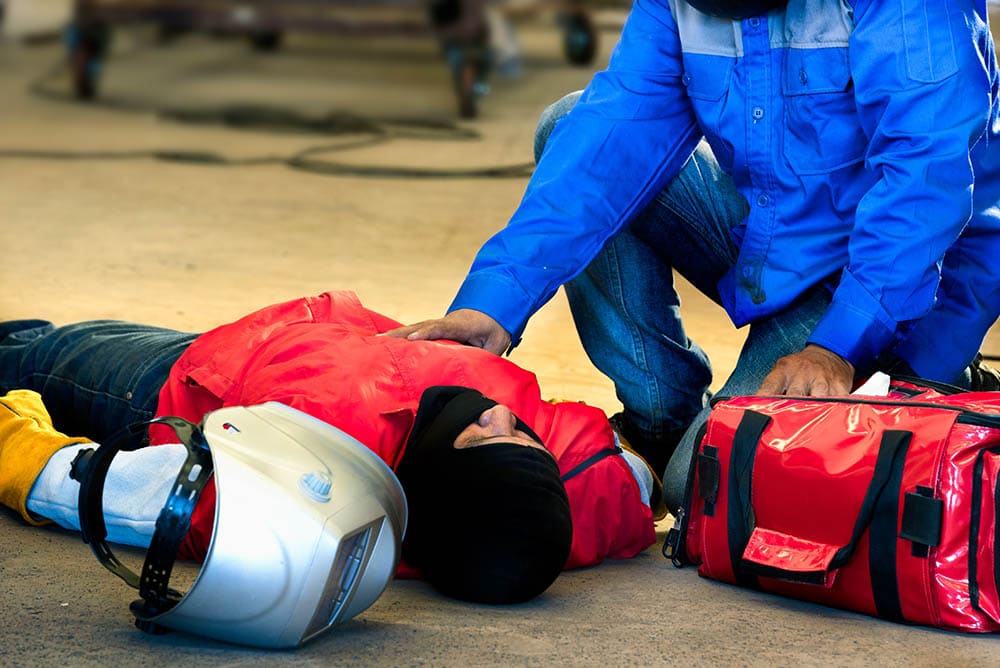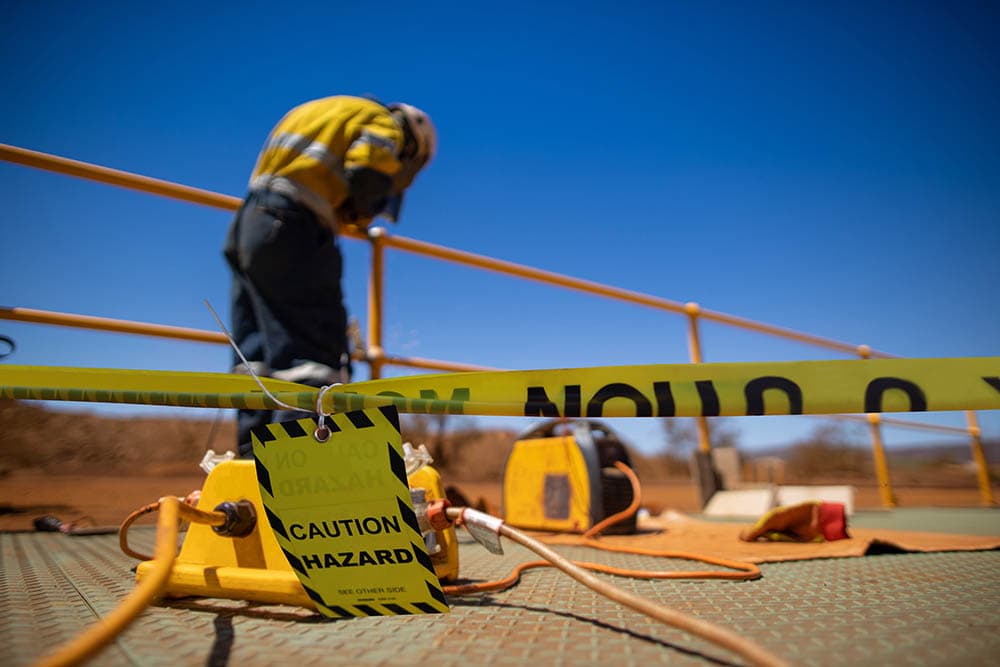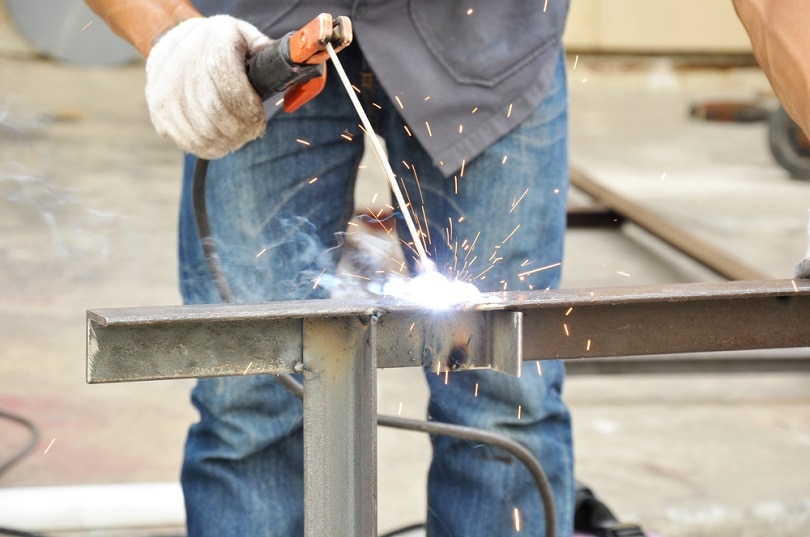How Common Are Welding Accidents & Injuries? (2024 Statistics)
Last Updated on

Have you ever wondered how frequent welding accidents occur and the root cause of these accidents?
Welding is a crucial job, and having reliable welding equipment can enhance this profession.
Still, welding accidents occur. In this article, we’ll discuss how common welding accidents and injuries are. We’ll also look at various welding accident statistics and share some interesting numbers and facts with you. Also, we’ll uncover a few root causes of these accidents.
Take a look!
Welding Accidents Statistics
A welding accident is a work-related traumatic injury resulting from a specific task. It’s where a person is exposed to a hot or sparking arc, flame, slag vapor, or flying debris. Melting of the weld pool causes this. Welding accidents can have dire consequences.
Welding accidents comprise roughly 25 percent of fatal occupational accidents. They also include about one-third of all non-fatal amputations.
The Bureau of Labor Statistics (BLS) collects injury and illness statistics on welding accidents. The BLS reveals that there are 21 welding accidents in the United States for every 100,000 workers.
According to the Bureau of Labor Statistics, for every 100 million work hours, about 1,000 workers suffer a welding-related injury. That’s a hundred times worse than the average injury rate for all other workers. And yet, welding is still the number-one task that causes welding injuries.

How Common Are Welding Injuries?
Welding accidents are common. According to the US Bureau of Labor Statistics, more than 560,000 workers get injuries every year from welding accidents. It’s because welding uses extreme heat.
There are several types of welding injuries. They include:
Electric Shock
The most common injury from welding is electric shock. An electric shock can occur from direct contact with the arc. Also, it can be indirect through equipment that conducts electricity such as a spray gun.
Optical Dangers
When welding, you get too close to a hot, glowing metal surface. Your eyes are most vulnerable.
Welding torches are bright, and your eyes are more sensitive to light. Sometimes your perception of light is altered by its temperature. You can’t see well in intense heat, and your pupils may contract or dilate. The hot metal surface reflects light, and welding torches reflect almost all the light into your eyes.
Welding is also dusty. The dust gets into your eyes before you notice and stays there, irritating. Eyeglass lenses and filters can help protect against these accidents.

Overexposure to Welding Fumes and Gases
Welding fumes are a mixture of gases and vapors that are emitted from the welding torch. Some of the gases in the fume mixture are hazardous to your health, while others are irritants.
Intense welding fumes can irritate the eyes, nose, and throat. Also, it leads to headaches. When welding fumes are confined to the work area, they pose no danger. But when breathed in, they can irritate the respiratory system. Inhaling welding fumes for a while can cause permanent lung damage.
The severity of welding fume exposure varies from person to person. Some people develop symptoms immediately. Others don’t become ill until the fumes are absorbed into their bloodstream.
The severity of symptoms also varies. Some welders suffer only from minor irritations. Others develop severe health problems depending on:
- The number of welding fumes that a person breathes in
- The length of time a person is exposed to a welding fume
- The type and severity of the welding fumes
Excessive Noise
Most welding procedures are done in loud, noisy shops. The higher the decibels, the more uncomfortable you’ll be when welding. Overexposure to noise can lead to loss of hearing.
The typical working noise level for welding is 90 decibels s regulated by OSHA. It’s equivalent to standing 10 feet away from a jet engine. Also, loud noise increases the risk of cancer and cardiovascular disease and can cause high blood pressure.
Fires and Explosions
Approximately 40% of injuries involving machines or equipment results from fires or explosions. It’s according to the Bureau of Labor Statistics.
Fires and explosions can occur when flammable vapors, gases, or liquids are ignited by an electric arc, spark, or flame. Such fires and explosions are riskier in confined areas.
Flammable vapors, gases, or liquids that collect inside welding and cutting equipment can mix and ignite oxygen from the air. It can create a dangerous explosive mixture.
Welding Sparks
Welding sparks (also known as spatter) are the small particles of molten metal flung into the air by welding. They can cause a welding accident if they hit a flammable surface. Welding sparks are a primary cause of fires and explosions in welding.

What’s the Most Common Injury Caused by Welding?
The most common injury associated with welding is a flash burn. It can result from arc flash (the burning-off of combustible gases and particles from the arc). It can happen when the arc is too close to flammable materials or when it’s too long.
Most welders work on large industrial machinery. They weld on:
- Steel
- Iron
- Stainless steel
- Aluminum
Each of these metals has its dangers. But, no matter what type of metal one is welding, the primary risk is arc flash. Arc flash can kill regardless of the metal you are working with!
Arc flash burns can range from a light, superficial burn to severe injuries resulting in third-degree burns. A flash burn affects the skin and underlying tissue. Third-degree burns are severe. It’s because the heat from the arc causes heat damage to the underlying tissues, nerves, and muscles.
The Occupational Safety and Health Administration (OSHA) estimate that there are around 2,500 to 3,000 severe arc flash burns a year. Most of these burns occur at construction sites, especially welding on roofs and structural steel. But, arc flash burns can also happen in:
- Manufacturing industries
- Nuclear power plants
- Railroads and many more
Workers who are most at risk are:
- Welders
- Cutting torch operators
- Gas torch operators
- Braziers
OSHA estimates that the number of welders involved in arc flash injuries is about 60 percent of the 2,500 to 3,000 severe burns a year.
Several factors contribute to arc flash injuries. The arc can be strong, hot, and invisible. It travels fast, and so, by the time it reaches you, it’s in form of light rays.
The arc can also be invisible because it flashes on and off fast, making it hard to distinguish. The arc flash can be triggered by the reflection of electricity from a nearby conductor.
What Type of Welding Has the Most Accidents?
Nowadays, most welders use stick welding as it produces the best-looking welds. But, stick welding is also the riskiest. It has about three times the rate of accidents as other types of welding.
Why is this? Stick welding has more moving parts than any other type of welding. Everything from the tip of the stick, welding machine, and lint trap, stick welding needs precise control. The lint trap catches all the little metal bits that fly around. The more complicated the machinery, the more possibility of an error.
Stick welding also involves more variables. For a weld to be of high quality, it must be powerful and smooth. That’s where stick welding has an issue. There are two kinds of stick welding (MIG and TIG).
MIG welding deposits metal quickly and with an amount of heat. It deposits metal exactly where it’s being applied.
On the other hand, TIG welding deposits metal more slowly and with less heat. It is more precise. But it can’t deposit metal where it’s being applied.
What’s the solution? With stick welding, you can do nothing about it. You only need a new kind of welding.
The best type of welding is Flux-Cored Arc Welding (FCAW). It deposits metal exactly where it’s being applied, with controlled amounts of heat. It’s the closest thing to the perfect welding machine you can imagine.

Are there Accidents Related to Underwater Welding?
Underwater welding, as most people practice it today, isn’t as safe. Chances of serious underwater welding accidents are extremely high.
People who perform tasks underwater usually start their careers by doing them on land. In underwater welding, the underwater environment can complicate things more than land welding.
There are three primary underwater welding accidents. They include:
Drowning
It results from an unintentional immersion in water. A welding torch can create a dangerous situation. The flames shoot upward, and the air above the pool of water may not be breathable.
Fire
Welding produces a lot of heat. If the fire isn’t contained, it can burn or melt through any material. Even a diver wearing a suit that blocks flames can get badly burned.
Explosions
Even a small explosion can produce enough pressure to blow out windows, doors, and anything else. The shock wave can knock even a strong diver unconscious.
Underwater welding also causes fatalities. The underwater welding death rate is about 15% according to the US Bureau of Labor Statistics.
Conclusion
There are many welding accidents worldwide. It proves how crucial it is for employers to take extra safety precautions. Welders should put on proper protective equipment and take regular welding certifications. Besides, they should review the construction blueprints to avoid mistakes, and much more.
A well-executed welding job is a work of art. But nothing can be flawless. Incomplete or improper welds can not only look bad but can cause problems. The wrong angle or poor metal preparation can mean a dreadful accident. It can either ruin other parts of a machine or cause a catastrophe to the operator’s well-being.
